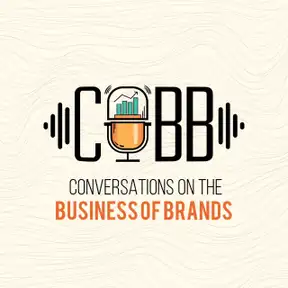146) Influencer Circus: A Structured Way to Navigate the Chaos (Part - 2)
In this eye-opening sequel to the previous episode, Sudeep Chawla interviews Sharavana Raghavan to shine a light on the lesser-known side of influencer marketing - the risks, the realities, and how brands can stay grounded in the middle of all the noise.
Packed with case studies like Dream11 and Mamaearth, this episode uncovers the laddered strategy behind some of India’s most successful influencer-driven campaigns. But more importantly, it issues a clear warning: this circus can entertain or collapse, depending on how well you manage it.
Whether you’re a challenger brand trying to punch above your weight or an established player debating whether to scale up influencer spends, this conversation gives you the playbook to navigate the chaos with clarity.
KEY THEMES EXPLORED
Case studies that got it right
Dream11 and Mamaearth used influencer marketing to build category awareness, not just run promotions. They started with niche creators and scaled up thoughtfully — using education, community, and advocacy as building blocks.
The dark side of the circus
Fake followers, bot-driven engagement, shady ROI, inconsistent messaging, and sudden algorithmic dips are just some of the pitfalls. Most brands struggle to track real returns and often misuse influencers for short-term spikes.
Influencers work best at the top of the funnel
Trying to force bottom-of-funnel outcomes from top-of-funnel creators leads to disillusionment and underperformance. Influencers drive discovery, not just transactions — and should be treated accordingly.
When to walk away
Sharavana offers a practical rule: if influencer CAC is 30% higher than your next best-performing channel, or if ROAS consistently falls below 3, it’s time to pause, reassess, or reallocate your budget.
Why Unilever’s playbook might not scale
The hosts debate Unilever’s move to build influencer armies across India and whether it reflects smart adaptation or a risky outsourcing of brand credibility. Their verdict: without authenticity and product quality, more voices won’t equal more trust.
KEY TAKEAWAYS
- Good influencer marketing begins with advocacy and education — not just paid posts.
- Watch out for fake metrics, bot followers, and short-term campaign thinking.
- Influencers are not media assets. They’re people with their own style, credibility, and voice.
- Use long-term partnerships and ambassador models wherever possible.
- If you’re losing control of your message, you’re not curating the circus — you’re just part of the audience.
QUOTES
“Just because it’s paid doesn’t mean it’s fake. But it has to feel real.”
“Influencer marketing works — if you treat it as a long-term relationship, not a performance hack.”
“When your influencer CAC is 30% higher than your next best channel, it’s time to rethink.”
“Don’t hand over your brand’s credibility without knowing how it’ll be used.”
If you’re a founder, marketer, or brand manager considering influencer marketing — or already feeling overwhelmed by it — this episode delivers the strategic clarity and caution you need to do it right. You can win at the influencer circus. But only if you direct the show.
As always, send your feedback and topic suggestions to mail@cobbcast.net!
Please tell us what topics you'd like to have discussed on the CoBB, by filling in this CONTENT SUGGESTION FORM
It only takes a few minutes, and it will help us provide you with the content most relevant to you.
CONNECT WITH OUR HOSTS
Sharavana Raghavan on Linkedin
FOLLOW USCoBB - LinkedIn
CREDITS
- Album Art & Design by ting.in
- Voiceovers by Anjale Stephanos
- Music from Zapsplat.com

